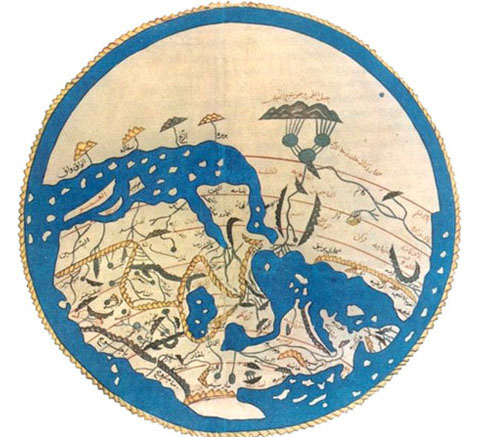Article of the Month - July 2022
“Slavery and Interethnic Sexual Violence:
A Multiple Perpetrator Rape in Seveneeenth-Century Livorno”
(Tamar Herzig: History, Tel Aviv University)
Tamar Herzig, "Slavery and Interethnic Sexual Violence: A Multiple Perpetrator Rape in Seventeenth-Century Livorno," American Historical Review, 127 (2022): 194–222
Read the article here (paywall)
Article Abstract:
This article unpacks the 1610 case of a multiple perpetrator rape of enslaved female Jews from Tétouan by Catholic convicts and Muslim slaves in Livorno, early modern Italy’s leading slaving center. Adding to the ongoing attempts to expose the violence inherent to the historical records of slavery, it charts the efforts to silence the slaves and offers a counternarrative to the one their slavers wished to create by erasing their suffering. The article argues that the assault was justified as part of a business strategy. The rape of female slaves by enslaved men as a means of increasing the slavers’ profits, it suggests, was thus a more global phenomenon than has hitherto been assumed and was not limited to women’s systematic raping in Atlantic slavery. Problematizing the scholarly focus on Muslim-Christian reciprocity in early modern Mediterranean slavery, it then proposes that the affluence of Livorno’s Jewish community increased the vulnerability of enslaved Jews in the city to excessive abuse. Complicating historiographic notions regarding religious pluralism and interethnic relations in Livorno, the assault’s analysis underscores the importance of writing Jewish slave women back into not only the history of slavery but also the narratives of Jewish history and Italian history.
Keywords: Mediterranean world • early modern history • slavery • gender • violence • sexuality • rape • Jewish-Christian-Muslim relations • ransom • captivity • Grand Duchy of Tuscany • Livorno • North Africa • Italian history • Jewish history
Nomination Statement:
This innovative and wide ranging essay exemplifies the power of archivally-based feminist analysis of enslavement to overturn scholarly paradigms. Herzig's analysis of archival sources surrounding the rape of enslaved female Jews by Muslim slaves and Catholic forced laborers in seventeenth-century Livorno recalibrates our understanding of slavery and captivity in the early modern Mediterranean in fundamental ways. By putting Jewish enslaved women front and center,. Herzig exposes the inadequacy of the bipolar model (Muslim-Christian, the latter defined as Catholics and Protestants) that has predominated in scholarship on this subject and thus has erased the experiences of enslaved people who did not fit these confessional categories. She also shifts historians' focus from male galley slaves and rescues these enslaved women from a very gendered archival silencing that began with the actual documents describing their sexual abuse. Finally, with her analysis of how their rape at the instigation of a prominent male Catholic slaver was intended as a message to the male leaders of Livorno's Jewish community, she reveals the vulnerability of this much vaunted Jewish community.
Authors’ Comment:
This article forms part of my broader research on female Jewish slavery in early modern Italy, which is generously funded by the Israel Science Foundation (grant no. 366/20). My interest in the enslavement of Jewish girls and women grew out of my earlier work on religious conversion. In the course of researching nuns’ involvement in converting Jews in the Italian peninsula, I came across the case of a Jew from Tunis, who had been brought to Florence as a slave girl in the early sixteenth century and ended her life in 1571 as a Dominican nun in Prato. As I argue in an article published in I Tatti Studies in the Italian Renaissance, during the first half century following the expulsion of the Jews from Spain in 1492, hundreds of Sephardic Jewish girls and women were sold into slavery in Italian port cities. Female Jews--most of whom were of Sephardic origins-- captured by Catholic corsairs on board Muslim ships or during coastal raids in North Africa continued to be sold in Italian slave markets throughout the sixteenth, seventeenth, and eighteenth centuries.
Recent scholarship has stressed the reciprocal logic underlying the treatment of enslaved Muslims and Catholics on both sides of the Mediterranean from the mid-sixteenth until the late eighteenth century. Yet as the findings of my ongoing research indicate, although slave-hunting corsairing was justified as a key element in Christianity’s confrontation with Islam, adhering to the Jewish faith did not protect female Jews in Mediterranean Catholic Europe from the brutalities of enslavement. Despite ample documentation attesting to the enslavement of Jewish women during this period, this gendered phenomenon has hardly been studied to date. In a forthcoming article, “Gender, Religion, and the Cultural Commemoration of Slavery in Livorno,” I further disucss the exclusion of enslaved female Jews from literary and artistic representations of slavery, and outline its historiographic implications for the study of human bondage in the early modern Mediterranean.
Would you like to discuss this article?
Start a thread on the Mediterranean Seminar list-server
See the other Articles of the Month here.
